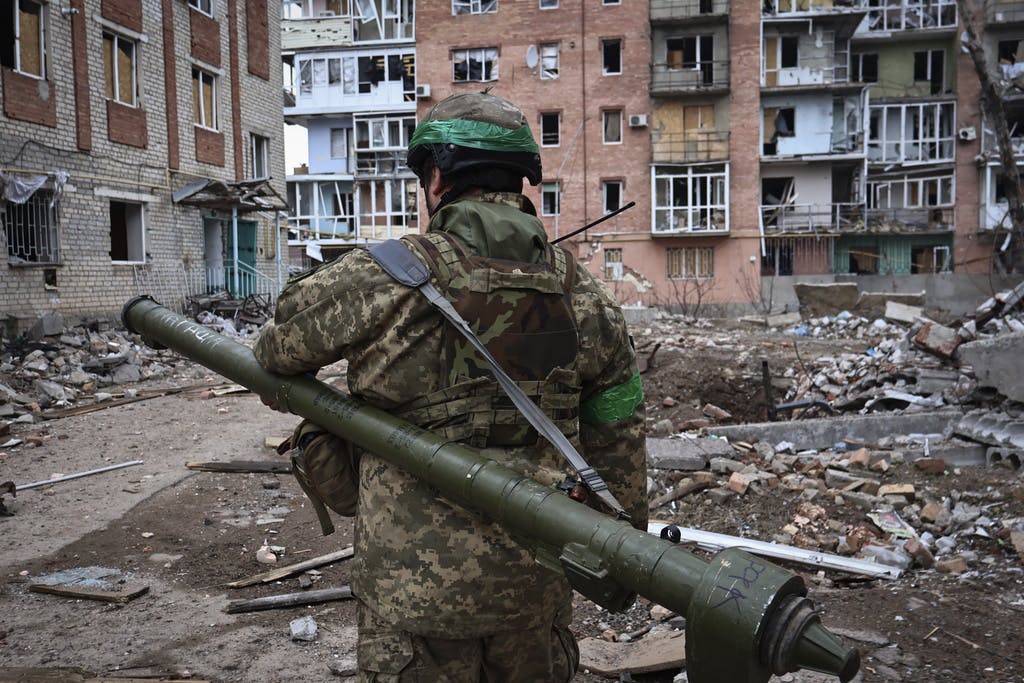Ukrainian Bluster Belies High Losses, Frontline Jitters: Report
‘Localized breakthroughs’ are possible even as casualties mount.

Despite the reliably confident tone of many Ukrainian officials on social media, the outlook for military success in the real world of gunshots and artillery fire is more problematic. According to a Washington Post report filed from the Dnipropetrovsk region, Ukraine’s army has been degraded by a year of casualties that has eroded a qualitative edge over Russia once seen as a lock.
With many experienced soldiers now out of commission, that has led some Ukrainian officials to doubt whether Kyiv is ready to launch a major counteroffensive, the newspaper reported.
It is also true that Kyiv could be holding back troops now in order to conserve strength ahead of a spring offensive. Yet a Ukrainian battalion commander in the 46th Air Assault Brigade, who goes by his call sign of Kupol, told Post reporters that the most valuable thing in war is combat experience. “There are only a few soldiers with combat experience,” he said, adding that “unfortunately, they are all already dead or wounded.”
Another Ukrainian official quoted said Ukraine “has neither people nor weapons” for a major counteroffensive. He added that “you know the ratio: When you go on the offensive, you lose twice or three times as many people. We cannot afford to lose so many people.” That official did raise the possibility of “localized breakthroughs.”
A German official told the Post that Berlin estimates that Ukrainian casualties, including dead and wounded, are as high as 120,000 — a number corroborated by American officials. Ukraine, for strategic reasons, is secretive with respect to the casualty figures that it makes public, choosing instead to highlight Russian losses, which are generally accepted to be higher: about 200,000 killed and wounded.
Clearly, though, exhaustion in a war of attrition has consequences for both parties to the conflict. There is apparently a lot of fear and loathing on both the Russian and Ukrainian sides of the frontlines, particularly around Bakhmut and other locations in the eastern Donbas where the heaviest fighting is now taking place. Despite President Zelensky’s evocation of 2023 as the year for victory, the mood on the ground — particularly in the east — is dark.
Kupol recounted going to battle “with newly drafted soldiers who had never thrown a grenade, who readily abandoned their positions under fire and who lacked confidence in handling firearms.” The commander said he recalled how after his unit withdrew from Soledar earlier in the winter, “hundreds of Ukrainian soldiers in units fighting alongside his battalion simply abandoned their positions, even as fighters for Russia’s Wagner mercenary group pressed ahead.”
A Ukrainian soldier said that Russian shelling at Donetsk has been so intense that some soldiers are prone to panic attacks and will not leave the trenches, with some even running from their positions.
Many do not want to end up there in the first place. “Ukraine’s internal security service recently shut down Telegram accounts that were helping Ukrainians avoid locations where authorities were distributing draft summonses,” the report said.
A persistent and pervasive shortage of ammunition makes the situation worse: not enough artillery shells, mortar bombs, or grenades. Washington is aware of the shortage and attempts are afoot to make up for shortfalls, even as Russia tries religiously to wear its opponent down — going so far as to lean on malign actors like Iran to keep its ammo intake flowing.
As for the German and American tanks slated for delivery, Ukrainian officials are not alone in viewing the limited quantity as largely symbolic. That makes the debate about whether the West should supply fighter jets as well largely academic at this point. Washington is training several hundred Ukrainian soldiers on advanced weapon systems and combined-arms warfare, and Britain is in on the effort as well. Yet without a diplomatic solution, it comes down to a numbers game, and Ukraine is not winning it.
The only thing that both Ukraine and Russian have in equal measure is what they had from the start: time. The Russians, who already have north of 325,000 troops in Ukraine, are using it to build an offensive, while the Ukrainians more or less bide their time, training new assault brigades and defending their land as best they can.
Ukraine’s ground forces commander, Oleksandr Syrsky, said, “We need to buy time to prepare reserves.”
No matter how much assistance America and its allies provide, it does not amount to more time, nor does it change the fact that Ukraine for all its progress in recent years is a poor country overall.
Vast Russia is by many objective measures a backward country, but it is the wealthier of the two. Whether that and the greater overall strength of its military will favor Russia if the war goes on and on, as some Biden administration officials predict it might, is unknown.
For now, the outlook is gloomy. On Wednesday, the AP reported that Russian forces had shelled the southern city of Kherson seven times in the last 24 hours. Meanwhile, in eastern Ukraine’s partially Russian-occupied Donetsk province — where Bakhmut remains the epicenter of fighting — the regional governor, Pavlo Kyrylenko, said a total of 14 cities and villages were shelled. That included Kramatorsk, where some of Ukraine’s military forces are based.

